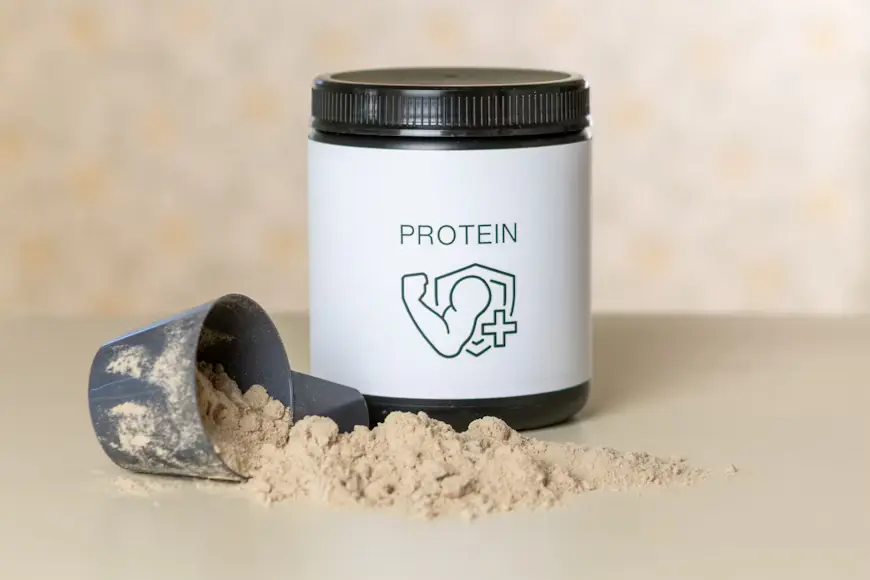How To Calculate Protein Intake | Guide & Details

- All of our content is written by humans, not robots. Learn More
Introduction to Protein Intake Calculation
Protein is a vital macronutrient that plays an essential role in nearly every aspect of the body’s function. From building and repairing tissues to supporting immune health and producing enzymes and hormones, protein is a cornerstone of overall well-being. For those pursuing fitness goals, protein intake becomes even more critical, as it aids muscle recovery, enhances strength, and supports body composition improvements. However, figuring out how much protein you need can often feel like navigating a maze of conflicting advice.
Table of Contents
ToggleThis article will demystify the process of calculating your ideal protein intake, offering a clear and practical guide tailored to your individual needs. We’ll explore the key factors that influence protein requirements, such as age, gender, body weight, activity level, and fitness goals. You’ll also learn step-by-step methods to determine your optimal intake, with examples and formulas to make the process simple. Finally, we’ll address common mistakes people make when consuming protein and provide actionable tips to help you incorporate the right amount into your diet effectively.
Whether you’re an athlete, a fitness enthusiast, or someone simply striving to improve your health, understanding how to calculate your protein needs is an invaluable tool for achieving your goals. Let’s break it down together.
Factors Influencing Protein Needs
The amount of protein a person needs varies widely based on several key factors. These variables determine how much protein your body requires to function optimally and meet specific health or fitness objectives. Understanding these factors will help you calculate your intake with precision and ensure your diet aligns with your needs.
Age is a significant determinant of protein requirements. For example, children and adolescents, who are in phases of rapid growth and development, often require more protein per pound of body weight compared to adults. Similarly, older adults may need slightly higher protein intake to counteract the natural loss of muscle mass associated with aging, a condition known as sarcopenia.
Gender also plays a role, although it’s less about inherent differences between men and women and more about variations in body composition and activity level. On average, men may have higher protein requirements due to a greater percentage of lean muscle mass, but this is not a universal rule. Active women with muscle-building goals may need more protein than sedentary men.
Body weight is a fundamental variable in determining protein needs. Larger individuals, particularly those with more lean body mass, will typically require more protein. Protein calculations are often expressed in terms of grams per kilogram (or pound) of body weight, making this factor one of the easiest to measure and apply.
Physical activity is one of the most significant drivers of protein requirements. For sedentary individuals, protein needs are relatively low, as the body primarily uses protein for basic physiological functions. However, for those who exercise regularly—whether through resistance training, endurance activities, or a combination—protein needs increase. This is because physical activity causes micro-damage to muscles, which must be repaired through the intake of amino acids, the building blocks of protein.
For example, athletes focused on muscle gain may need higher amounts of protein to support hypertrophy (muscle growth), while endurance athletes might prioritize protein for recovery and preserving lean mass during intense training.
Protein intake should also be tailored to your specific goals. If you’re aiming to build muscle, you’ll likely require more protein to promote muscle synthesis. Conversely, if weight loss is your goal, a higher protein intake can help preserve lean body mass while promoting fat loss by increasing satiety and supporting metabolic activity. Individuals recovering from illness or surgery may also have elevated protein needs to facilitate tissue repair and immune function.
Finally, unique factors such as pregnancy, breastfeeding, or managing certain medical conditions may impact protein requirements. Pregnant or breastfeeding women often require additional protein to support the growth and development of the baby. Similarly, individuals with chronic diseases, injuries, or recovering from surgical procedures might need elevated protein levels to aid in recovery.
By considering these factors, you can better understand what influences your protein requirements and how to customize your intake accordingly.
Methods to Calculate Protein Intake
Once you’ve considered the factors that influence protein needs, the next step is calculating your ideal intake. Several methods are commonly used, ranging from simple body weight calculations to more nuanced approaches that account for activity and goals. Below, we’ll explore these methods in detail and provide practical examples to guide you.
Body Weight Method
One of the simplest ways to calculate protein intake is based on body weight. A general guideline is to consume 0.8 grams of protein per kilogram (or 0.36 grams per pound) of body weight. This baseline recommendation, established by the Recommended Dietary Allowance (RDA), is meant to prevent protein deficiency in sedentary adults.
However, this amount is often insufficient for active individuals or those with specific fitness goals. For example:
- Sedentary individuals: 0.8–1.0 g/kg (0.36–0.45 g/lb)
- Moderately active individuals: 1.2–1.6 g/kg (0.54–0.73 g/lb)
- Highly active individuals or athletes: 1.6–2.2 g/kg (0.73–1.0 g/lb)
For a 150-pound person (approximately 68 kilograms) with moderate activity, the protein intake range would be:
- 68 kg × 1.2 = 82 g of protein
- 68 kg × 1.6 = 109 g of protein
This individual would aim for 82–109 grams of protein per day.
Activity Multipliers
For a more tailored approach, activity multipliers can help refine your protein needs. These are percentage-based adjustments that account for the intensity and duration of your activity. For example:
- Light activity: Multiply body weight (in pounds) by 0.5–0.7
- Moderate activity: Multiply by 0.7–0.9
- Intense training or muscle building: Multiply by 0.9–1.2
Macronutrient Ratios
If you follow a specific diet, such as a high-protein or ketogenic plan, you can calculate protein intake as a percentage of total calories. For example, if your daily calorie goal is 2,000 calories and you want 25% of those calories to come from protein:
- 2,000 × 0.25 = 500 calories from protein
- Protein contains 4 calories per gram, so 500 ÷ 4 = 125 grams of protein daily.
Practical Example
Let’s say you’re a 180-pound athlete aiming to build muscle. Using the body weight method and targeting 1 gram of protein per pound:
- 180 × 1 = 180 grams of protein daily
If your goal is fat loss while preserving muscle, you might aim for 1.2 grams per pound:
- 180 × 1.2 = 216 grams of protein daily
By using these methods, you can determine a range that aligns with your body type, activity level, and goals.
Common Mistakes in Protein Intake
While protein is essential, it’s easy to make mistakes when calculating or consuming it. Understanding these pitfalls can help you avoid common errors and optimize your diet.
Overestimating Protein Needs
One frequent mistake is assuming that more is better. Consuming excessive protein can strain the kidneys and lead to imbalanced diets that neglect other nutrients. For most people, sticking within recommended ranges is more effective and sustainable.
Neglecting Protein Timing
Another common error is consuming most of your protein in one meal rather than spreading it out throughout the day. Research suggests that distributing protein evenly—such as including 20–40 grams per meal—supports better muscle protein synthesis and recovery.
Over-Reliance on Supplements
Protein powders and bars are convenient, but they shouldn’t replace whole food sources. Whole foods, like chicken, fish, eggs, beans, and tofu, provide additional nutrients, including vitamins, minerals, and fiber, that supplements lack.
Ignoring Quality of Protein Sources
Not all protein is created equal. High-quality protein sources contain all nine essential amino acids and are more effective at supporting muscle repair and growth. Examples include animal proteins like lean meats, dairy, and eggs, as well as plant-based options like quinoa and soy.
Forgetting Individual Variability
Finally, many people fail to adjust their protein intake to match their changing needs over time. Goals, activity levels, and life circumstances all shift, so it’s important to reassess your requirements regularly.
Conclusion and Practical Tips
Calculating your protein intake doesn’t need to be complicated, but it does require attention to detail and an understanding of your unique needs. Here’s a summary of the key steps:
- Consider factors like age, gender, body weight, activity level, and goals.
- Use methods such as body weight calculations, activity multipliers, or macronutrient ratios to determine your target range.
- Avoid common mistakes like overestimating needs, neglecting timing, or relying too heavily on supplements.
To incorporate the right amount of protein into your diet, focus on whole foods like lean meats, fish, eggs, dairy, legumes, and plant-based proteins. Plan your meals to distribute protein intake evenly, aiming for 20–40 grams per meal. For those with busy lifestyles, supplements can be a helpful addition but should not replace nutrient-rich foods.
If you’re unsure about your specific needs or have a medical condition, consult a healthcare professional or registered dietitian. They can provide personalized guidance to ensure your protein intake supports your health and fitness goals effectively.
By following these guidelines, you’ll be well on your way to optimizing your protein intake and reaping the benefits for your health and performance.

![TDEE Calculator: Why Most Calorie Calculations Are Wrong [Expert Analysis]](https://www.fitnessmentors.com/wp-content/uploads/2025/10/TDEE-Calculator-Why-Most-Calorie-Calculations-Are-Wrong.webp)
